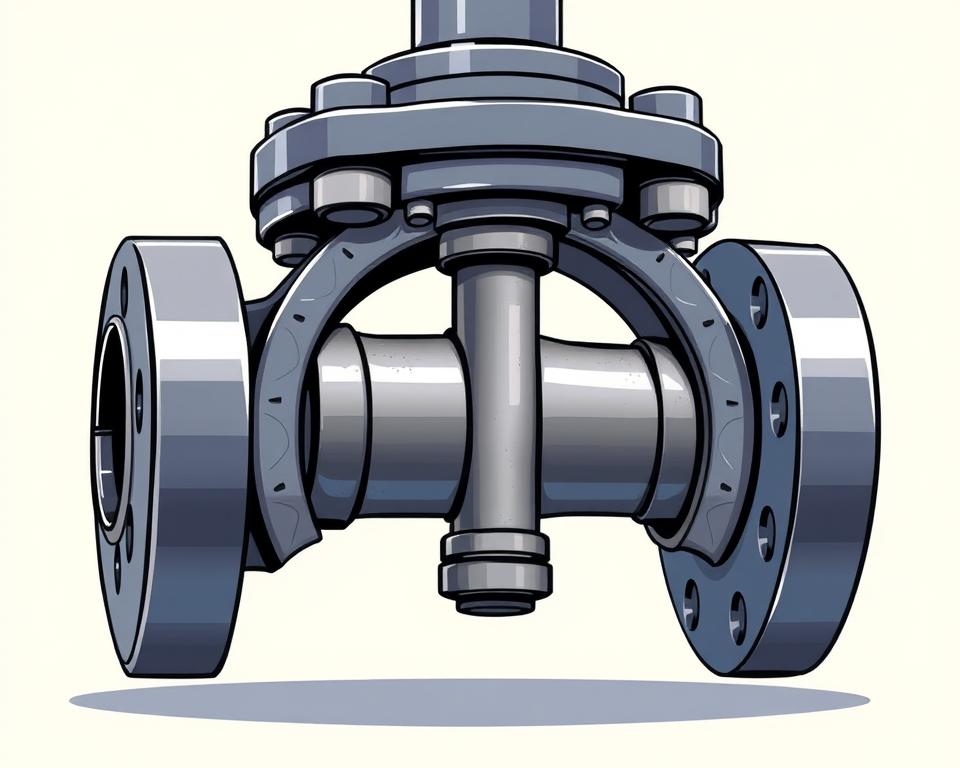Cast-Iron Gate Valves: Long-Lasting Utility Flow Management
Quick stat: More than three-fifths of public distribution networks continue to use conventional isolation gear for dependable isolation when incidents occur.
We offer a workhorse line of Cast Iron Gate Valve Manufacturer designed for long life in industrial, commercial, and municipal use throughout the U.S.. Each unit pairs a sturdy body-and-bonnet assembly with a proven gate design to withstand wear and reduce corrosion under variable pressure and temperature cycles.
The full-bore gate cuts flow restriction at full open, helping systems move water and compatible media with minimal headloss. Specifiers and technicians prefer the simple serviceability, common connection options, and easy-to-source parts that streamline selection and repairs.
This range spans a variety of series and class ratings to match standard duty ranges, end connections, and operator preferences. Expect repeatable sealing, steady operating torque, and budget-friendly ownership centered on uptime and low life-cycle cost.
Key Takeaways
- Built for durable shutoff and consistent flow control in varied environments.
- Rugged construction helps resist wear, corrosion, and mechanical stress.
- Gate design delivers low flow restriction and less pressure loss.
- Provided in several series and class ratings to match typical requirements.
- Easy maintenance, standard parts, and predictable sealing improve uptime.
Reliable, Precise Flow Control with Cast Iron Gate Valves
Precision shutoff valves with precision-machined wedges and machined seats provide consistent performance across start-up, normal, and shutdown cycles. Stout iron bodies and tight-sealing seats enable repeatable sealing. That consistency supports safe isolation and cuts unplanned downtime.
Low-effort characteristics cut handwheel effort and let technicians position the wedge with confidence. Standard stems and accessories allow easy adaptation to manual handles or actuators. Less effort streamlines routine checks and repairs.

Stem Types and Performance
| Attribute | Rising Stem | Non-Rising Stem |
|---|---|---|
| Open/close visibility | High — visual indicator | Low — enclosed indication |
| Overhead clearance | Requires overhead clearance | Better for tight or buried service |
| Service | Straightforward inspection | Lower profile, same service life |
When fully opened, the full-bore passage delivers low pressure loss and efficient flow. Tight sealing limits leakage risk and helps keep target pressure for downstream equipment. Together, these qualities lower life-cycle cost and improve system uptime across common commercial and light industrial applications.
Specs, Designs, and Options for Cast Iron Gate Valves
Specific design decisions—body alloy, stem style, and flange pattern—influence fit, function, and maintainability.
Body and Bonnet Build
The body and bonnet are made from cast iron for strength and resistance to vibration. Accurate guides keep the gate aligned for consistent sealing.
Rising Stem vs Non-Rising Stem
A rising stem offers a clear visual position indicator and is simple to inspect but needs extra headroom. A non-rising stem saves overhead space and protects threads within the bonnet.
Both stem designs are compatible with common handwheels and can be actuator-ready or external position indicator accessories when automation is required.
Understanding Class 125 Performance
ASME Class 125 is common for water and general service within normal temperature envelopes. Verify with published pressure-temperature limits to verify suitability for the intended operating envelope.
Flange Details and Dimensions
| Feature | Standard | Details |
|---|---|---|
| Flange drilling | ASME bolt pattern | Fits standard piping layouts |
| End-to-end | Per industry series | Verify exact length on spec |
| Bolting | Grade and torque per spec | Gasket choice influences seal |
- Sizes/series: from small diameters up to large mains with varied series and trim choices for long life and easy service.
- Trim & packing: seat/wedge materials balance tight shutoff and longevity; upgraded packing and bonnet gasketing tighten stem sealing.
- Install tips: double-check dimensions, bolting, and torque prior to install.
Applications, Compliance, and System Integration
Applications for these Resilient Seated Gate Valve cover municipal mains, building risers, and pump room isolation points where reliable shutoff is critical.
Water distribution and fire systems often use these devices as sectional and control points. They offer clear position feedback and reliable shutoff for life-safety and utility networks.
Flow, shutoff, and bi-directional service
The gate design supports shutoff in either flow directions when installed as specified. This adaptability simplifies piping layouts and supports redundant piping arrangements.
Serviceability and Bonnet Integrity
Accessible bonnet fasteners, guided wedges, and replaceable packing streamline inspection/repacking. Right packing setup maintains stem sealing during frequent operating cycles.
Indicators, OS&Y, and direction practices
External posts and OS&Y styles offer clear open/closed indication for inspections. Even with bi-directional service, observe the specified orientation and clearance practices to ensure safe operation.
| Use Case | Primary Benefit | Design Check |
|---|---|---|
| Water mains | Reliable isolation | Confirm class 125 pressure limits |
| Fire protection | Visible status for AHJ | Use indicator or OS&Y option |
| Pump stations | Maintenance friendly | Confirm flange/F2F compatibility |
Conclusion
Choose proven shutoff equipment combining sturdy construction and predictable flow control.
These gate valve solutions provide durable isolation and dependable control for water and utility service. Expect easy installation and service-friendly upkeep for reliable long-term service.
Key specs include Class 125 rating, a robust body and bonnet, and engineered stem sealing to hold performance steady across facility environments.
Multiple series and common sizes, plus handwheel or actuator-ready options, simplify system matching. Visible position indication and smooth stem travel improve daily operation and response under variable conditions.
The gate wedge and seat supports leak-tight closure and low pressure drop. Confirm sizes, end connections, and accessories at specification time to speed procurement and commissioning.
Select valves built to rigorous standards. Our team can review class, sizing, and series choices to align equipment with your operating and maintenance goals.
